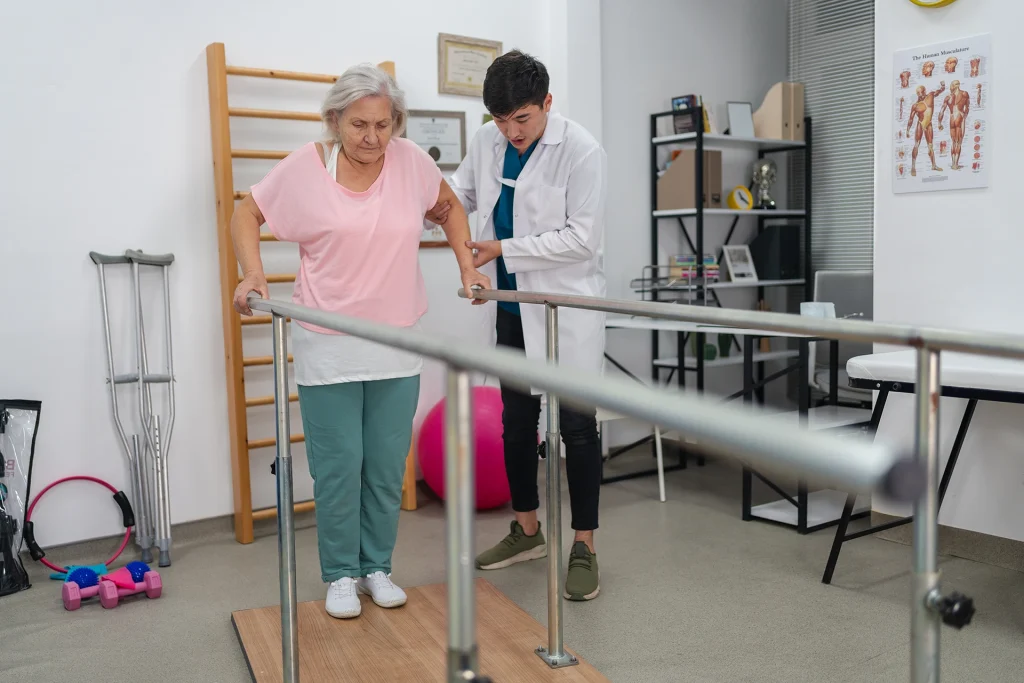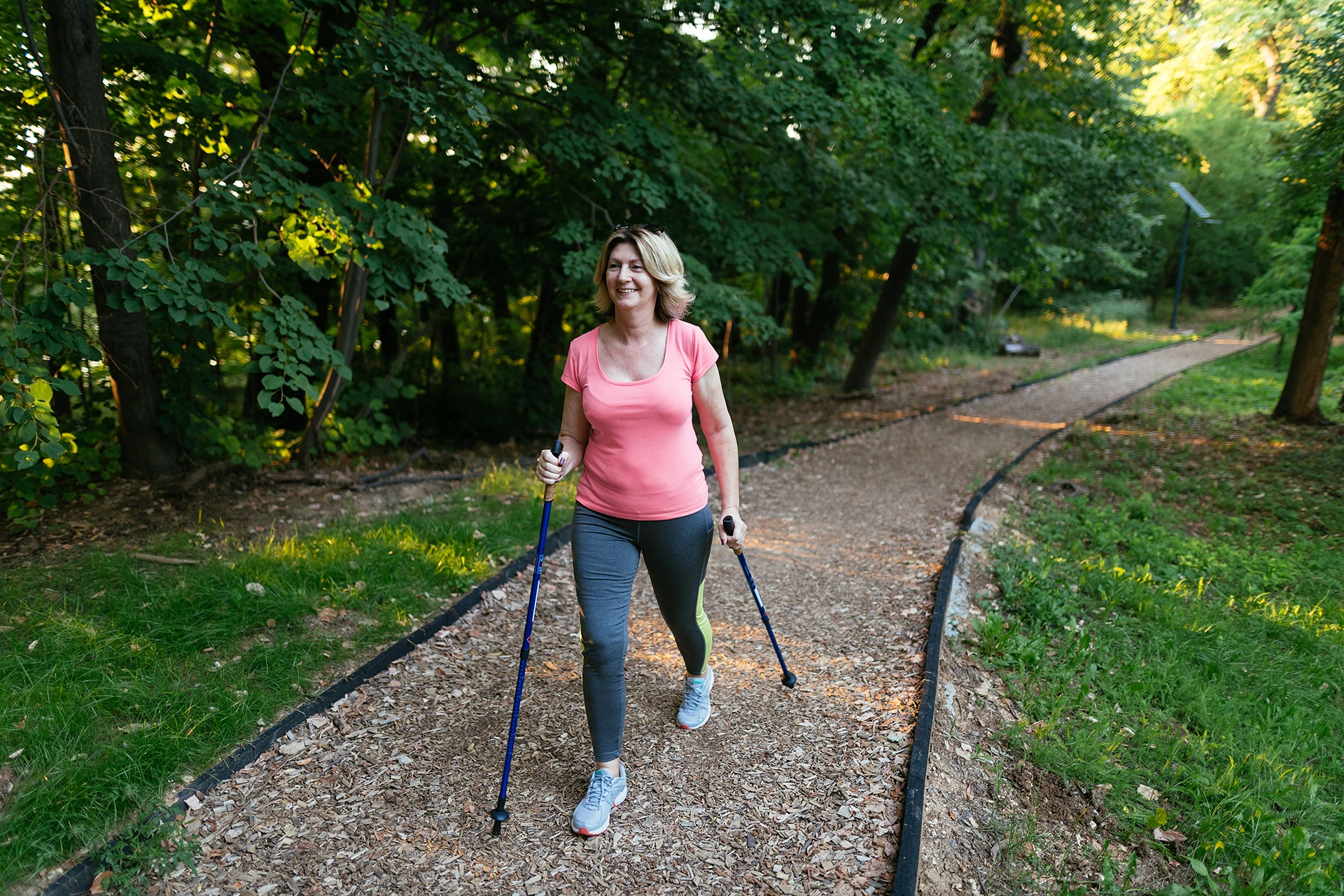The Role of Walking in Managing Sciatica Pain and its Underlying Factors
Your back aches. Your leg throbs. Simple movements like getting up from a chair or rolling over in bed spike searing pain down your leg that makes you wince. You have sciatica – an often debilitating condition caused by irritation or compression of the sciatic nerve. While medications and physical therapy can provide some relief, is one of the simplest activities – walking – an effective way to manage sciatica?
Walking requires no special skills or equipment, just a pair of supportive shoes. But could this gentle exercise act as natural medicine against the crippling effects of sciatica? In this article, we’ll explore the role of walking in alleviating sciatica pain and addressing its underlying causes. You’ll learn how a regular walking routine can reduce inflammation, build strength, and improve flexibility and posture to help get you back on your feet again. We’ll also provide tips on developing a sciatica-friendly walking plan that paves the path to less pain and more mobility.
Understanding Sciatica
Sciatica refers to pain that radiates along the path of the sciatic nerve, which branches from the lower back through the hips and buttocks and down each leg. Sciatica occurs when the sciatic nerve becomes compressed or irritated.
The most common cause of sciatica is a herniated or “slipped” disk in the spine. Disks act as cushions between the vertebrae that make up the spinal column. A herniated disk occurs when some of the soft inner material of the disk leaks out from the outer casing and presses against the adjacent nerve root. This nerve compression results in the classic shooting pain felt in sciatica.
Other sciatica causes include:
| 1 | Spinal stenosis | Narrowing of the spinal canal that houses the spinal cord. This presses on the nerves exiting the spinal cord. |
| 2 | Degenerative disc disease | Age-related wear and tear causes discs to lose flexibility, height and cushioning ability. Can lead to herniated discs. |
| 3 | Spondylolisthesis | Vertebra slips out of position onto the vertebra below it. Can narrow the spinal canal. |
| 4 | Piriformis syndrome | The piriformis muscle in the butt spasms and irritates the sciatic nerve. |
| 5 | Sacroiliac joint dysfunction | Irritation of the sacroiliac joint between the base of the spine and pelvis. |
| 6 | Pregnancy | Pressure from the weight of the baby on the sciatic nerve. Usually resolves after birth. |
Regardless of the cause, sciatica occurs when part of the sciatic nerve is compressed or irritated, resulting in radiating pain along the nerve’s path down the leg(s). Identifying and treating the underlying cause is key to finding lasting relief.
The Science Behind Walking and Sciatica
There are several ways that walking can provide benefits for people struggling with sciatica:
1. Improved blood flow
Gentle physical activity like walking facilitates blood circulation throughout the body. Increased blood flow delivers vital oxygen and nutrients to the lumbar spine and sciatic nerve roots. This helps reduce inflammation that may be causing irritation.
2. Core and abdominal activation
Walking engages the abdominal and core stabilizing muscles that provide essential support for the lower back. Strengthening these muscle groups takes pressure off the lumbar discs and joints.
3. Spinal decompression
The natural pumping motions of walking gently stretch and elongate the spine with each step. This spinal decompression allows more room for nerve roots exiting the spinal column.
4. Range of motion
Walking keeps the muscles and connective tissues of the hips, legs, and buttocks flexible through a full range of motion. This prevents the stiffness that can aggravate sciatic and back pain.
5. Less sitting
Walking gets people up and moving, reducing time spent sitting. Prolonged sitting is linked to increased risk of herniated discs.
The combined benefits reduce compression on the sciatic nerve and improve overall spinal and hip function. For many patients, walking offers an accessible way to actively alleviate sciatica symptoms.
Pros and Cons of Walking with Sciatica

Walking can be an excellent gentle exercise for managing sciatica, but some considerations should be kept in mind:
| Benefits of walking | Potential drawbacks of walking |
| Increased blood flow to compressed nerve roots | Poor posture or walking gait may worsen pain |
| Gentle stretching of muscles and connective tissues in the legs, hips, and lower back | Too intense of a walking routine may aggravate symptoms |
| Activation and strengthening of core and abdominal muscles to stabilize the spine | Uneven walking terrain may cause overcompensation that strains the back |
| Improved range of motion in the hips and lower body | Finding a tolerable walking pace may take some trial and error |
| Low impact and easily modified to comfort and ability | Standing still or walking uphill is often more challenging than maintaining a steady pace |
By starting slowly and gradually increasing walking time, distance, and speed, most patients can find a sweet spot that provides benefits without flaring up their sciatica. Listening to one’s body and making modifications as needed can make walking a sustainable exercise.
Tailoring Your Walk to Your Sciatica Needs
Here are some tips for getting the most out of walking as a sciatica exercise:
- Consult your doctor: Always talk to your healthcare provider before beginning or changing your exercise routine when dealing with sciatica.
- Start low, go slow: Begin by walking for just 5-10 minutes at a relaxed pace on flat, even ground. Slowly increase time and distance from there.
- Schedule regular walks: Consistency is key, so set a routine of walking 3-5 times per week if possible.
- Find your pace: Experiment between slower and brisk walking speeds to find what feels best. Slower paces tend to be better tolerated.
- Use proper posture: Stand and walk tall, keep your core engaged, and avoid hunching or leaning to one side. A chest strap can help cue proper posture.
- Add rest breaks: Short breaks to sit or stretch can provide relief, especially when standing still or changing directions.
- Alternate activities: Switch between walking, swimming, or seated exercises to give your body variety.
- Listen to your body: Stop and take a break or modify your pace/technique if you start having intense pain.
- Use walking aids if needed: Items like cushy shoes, a cane or walking poles can provide extra support.
By tailoring your walking routine to meet your unique needs as a sciatica patient, you can use it as an effective part of your overall treatment plan.
Exercises to Complement Walking for Sciatica
In addition to regular walking, specific exercises that stretch and strengthen the muscles supporting the lower back, hips and glutes are recommended to help manage sciatica. These exercises can reinforce the benefits of walking. Examples include:
| 1 | Bridge pose | Strengthens the glutes, hamstrings, and core muscles. Can be done with single or double leg lifts. |
| 2 | Child’s pose | A kneeling back stretch that gently elongates the spine. Helps relieve tension. |
| 3 | Knee-to-chest | Loosens up the lower back and hip flexors. Pull one or both knees gently towards your chest. |
| 4 | Supine hamstring stretch | Lying on your back, one leg bent, and one leg straight up. Hinge at the hip to feel a gentle stretch in the back of the extended leg. |
| 5 | Seated spinal twist | Twists the spine carefully while sitting. Opens up the lower back areas. Can place an arm behind you for support. |
| 6 | Abdominal stretches | Gentle stretches that target the abs without excessive spinal flexion. Hug knees into chest while lying down. |
| 7 | Pelvic tilts | Gently arch lower back, then flatten it. Tones abdominal muscles. |
| 8 | Partial crunches | Lightly engage abdominals by lifting shoulders slightly off the floor. Keep back rounded. |
These exercises can be woven into a balanced routine with walking to enhance spine and core strength. Move through all motions slowly and smoothly. It is also critical to maintain proper posture and engage core muscles when doing any activity.
Other Treatment Options and Considerations
In addition to walking and exercise, there are a variety of treatment options for managing sciatica. These include:
- Medications: Over-the-counter or prescription medications to reduce inflammation and pain. Common options are NSAIDs like ibuprofen, muscle relaxants, and steroids.
- Physical therapy: Specific exercises, stretches, and techniques done under the guidance of a physical therapist. Can also include pain-relieving modalities like heat therapy.
- Massage: Helps loosen tight muscles contributing to sciatic and back pain. Focus on hamstrings, hips, glutes, and lower back.
- Chiropractic: Spinal manipulation and adjustments to improve mobility of the vertebrae. Aims to reduce spinal irregularities and nerve compression.
- Acupuncture: Fine needles inserted into specific points along the affected nerve pathway help reduce sciatic pain and inflammation.
- Epidural steroid injections: Steroid medication injected into the epidural space around the spinal cord provides localized pain relief. Most effective for disc herniation.
- Surgery: If sciatica does not improve with more conservative treatment, surgery may be an option. Commonly discectomy or microdiscectomy procedures.
When considering treatment options, an accurate diagnosis from a medical professional is vital for long-term improvement. Under their guidance, the most appropriate options can be selected based on the individual’s specific condition.
It is also important to avoid activities that commonly aggravate sciatica during flare-ups. These include:
| Heavy lifting or bending puts strain on the lower back. |
| Over-twisting the spine can compress lumbar nerve roots. |
| High-impact exercises like running or jumping jars the spine. |
| Excess sitting causes stiffness and reduced blood flow. |
| Improper posture like slouching and hunching compresses the lower vertebrae. |
| Sleeping on the stomach twists the lower back and pelvis. |
With some activity modifications and by listening to one’s body, flare-ups can often be prevented. Light walking tends to be very well tolerated.
Walking Tools and Accessories
There are some tools and accessories to consider when starting a walking regimen to manage sciatica:
- Good walking shoes: Shoes with ample cushioning and arch support prevent jarring impacts to the spine.
- Back brace: Worn while walking, a brace provides lumbar support and promotes proper posture.
- Cane or walking sticks: Take pressure off the lower back by transferring some weight through the arms.
- TENS unit: Worn while walking, electrical stimulation helps override sciatica nerve pain signals.
- Posture cue devices: Items like shoulder brace straps gently pull the shoulders back to prevent slouching.
- Seat cushions: Bring relief to painful sciatica by taking pressure off the lower back and hips while sitting and resting.
- Ice and heat packs: Applying ice after walking helps relieve inflammation while heat beforehand loosens up muscles.
These tools can make walking more comfortable and sustainable as part of a long-term strategy for controlling sciatica pain. Proper use and advice from a medical professional ensures these aids provide optimal benefit.
Takeaway

For many patients with sciatica, walking can be an excellent first-line treatment option. The benefits of improved circulation, range of motion, core strength and posture all work together to take pressure off the compressed nerves causing the pain. Starting with short distances and slow paces allows the body to adapt without overexertion.
Along with appropriate periods of rest, supplements like core exercises, stretches, and other low-impact activities help reinforce walking’s advantages. By avoiding positions and movements that aggravate their sciatica during flare-ups, patients give walking and other treatments the best chance of managing symptoms.
It is important to consult with your doctor to ensure walking and exercise is appropriate for your individual condition. Working with knowledgeable medical professionals ensures an accurate diagnosis guides the treatment plan. Services like Kaly can connect patients to top specialists to further evaluate if walking may help relieve their sciatica. With some patience and persistence, a walking regimen tailored to your needs can provide lasting sciatica relief. Sign up to get started!
